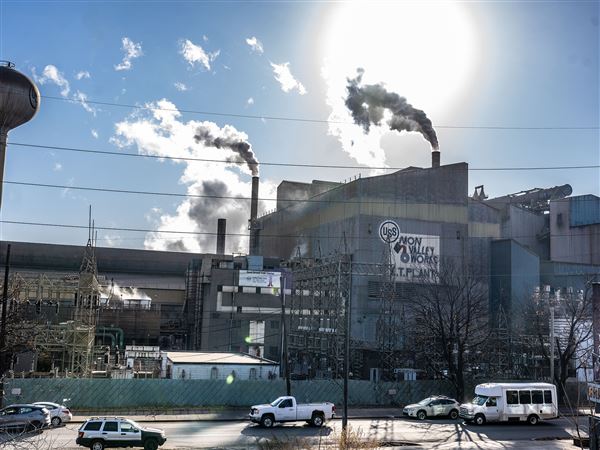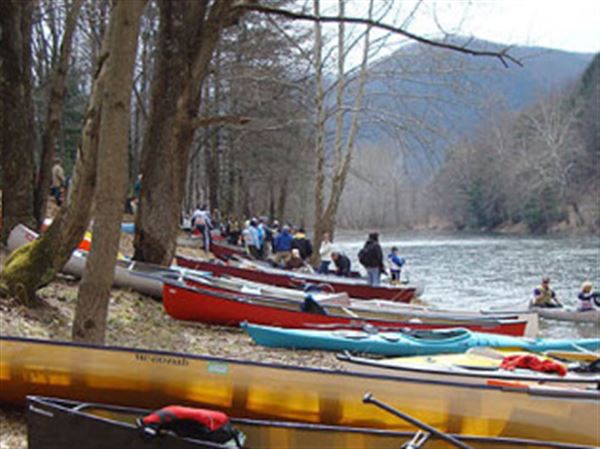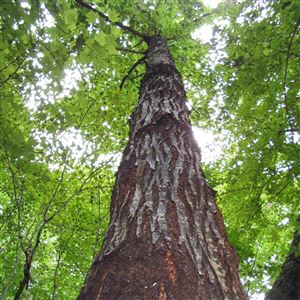NOTE: A photo of an incorrect caterpillar species was removed from this post.
Controversy over the policy of spraying to reduce gypsy moth infestations at the state level spread this spring from New England to Pennsylvania, where spraying of more than 23,907 acres on 14 different state game lands began in May.
In Rhode Island, the House Minority Leader said the infestation is a “crisis” and other politicians in the region want the government to help eradicate the pests, though entomologists say forests there will be better off if they let nature take care of itself.
In Pennsylvania the roles are reversed. Biologists from the state Game Commission and Department of Conservation and Natural Resources have organized the spraying of nontoxic Bt, Bacillus thuringiensis, while some legislators oppose it. Monroe County will not participate in a DCNR gypsy moth suppression program despite being near the center of the heaviest projected infestation in the state. Luzerne County, too, has refused to sanction the spraying.
The Pennsylvania program follows a 2016 statewide inventory of gypsy moth impacts that detected defoliation on more than 15,000 acres.
“This year, we are spraying additional acreage beyond what was actually defoliated last year,” said Dave Gustafson, Game Commission chief forester, in a statement. “Based on the egg mass counts in 2016, we anticipate some local gypsy moth populations are growing again, and we want to be proactive to prevent a population buildup that would result in similar defoliation and loss.”
Selection of the game lands targeted for spraying was determined by the significance of the region’s oak trees. Of particular importance were game lands containing environmentally critical or unique bird or mammal habitats, past gypsy moth infestations and the financial value of the game lands’ timber stands.
Last year, the Game Commission paid for the spraying of some 32,000 acres by transferring $720,000 from its Pittman-Robertson Federal Wildlife Grant funding to DCNR, which oversees the Statewide Cooperative Spray Program for gypsy moths. To pay for this year’s spraying, commissioners will move $450,300 to DCNR. In 2016, Pennsylvania’s northwest, northcentral and southwest regions were barely hit by gypsy moth defoliation. They are not marked for spraying this year.
During previous gypsy moth infestations, destroyed oak woodlands were rapidly replaced by birches and maples, which are less beneficial to wildlife than mast-producing oaks.
“In the 1940s, after the chestnut blight nearly wiped out American chestnuts, which provided the best and most reliable wildlife foods, oaks filled the void for wildlife,” Gustafson said. “Unfortunately, in some areas, we now are seeing birch and maple replace the oak stands lost to gypsy moth defoliation.
“Prior to gypsy moth impacts, oak trees in Huntingdon County reportedly were producing 173 pounds of acorns per acre. After gypsy moths, the same areas were yielding only 67 pounds of acorns per acre. Seven of the eight lowest acorn production years occurred after gypsy moths hit the area, and 43 percent of oak trees were lost.”
The public frequently misidentifies caterpillars commonly found on trees in southwestern Pennsylvania.
The invasive alien gypsy moth is responsible for countless mortality of trees, ecological damage and financial loss regarding our forests. This is not true for the native eastern tent caterpillar moth,” said Charles Bier, Western Pennsylvania Conservancy senior director of conservation science, in email correspondence, ”The public is already confused and uneducated about the identification of these two moth species, as some believe that they are seeing the gypsy moth when actually they see the ‘tent’ of the eastern tent caterpillar”
Mr. Bier said the native fall web worm (Hyphantria cunea) is commonly misidentified, too.
“The public generally lumps any such ‘worms’ as bad, without going further to learn more that they are key parts of our forest ecosystems, and play roles in food chains, etc., that lead to attractive birds that are appreciated.”
AP contributed.
First Published: June 11, 2017, 4:00 a.m.















